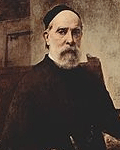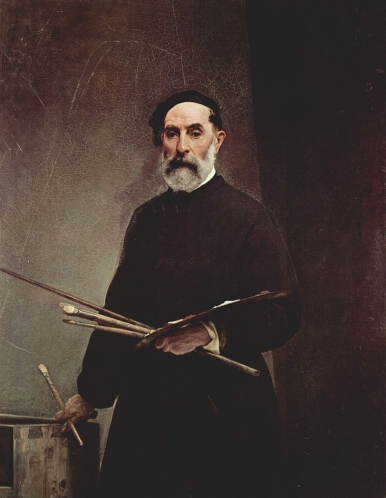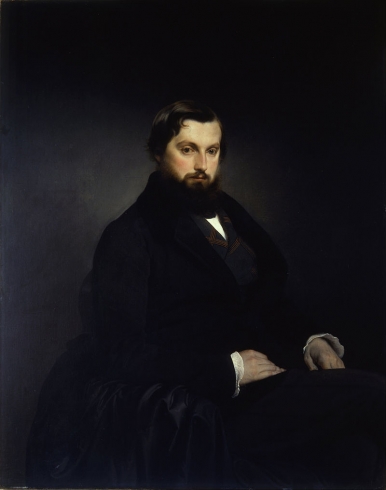본문

추가정보
Francesco Hayez (February 10, 1791 ?December 21, 1882) was an Italian painter, the leading artist of Romanticism in mid-19th-century Milan, renowned for his grand historical paintings, political allegories and exceptionally fine portraits.
Hayez came from a relatively poor family from Venice. His father was of French origin while his mother, Chiara Torcella, was from Murano. The child Francesco, youngest of five sons, was brought up by his mother's sister, who had married Giovanni Binasco, a well-off shipowner and collector of art. From childhood he showed a predisposition for drawing, so his uncle apprenticed him to an art restorer. Later he became a student of the painter Francisco Magiotto with whom he continued his studies for three years. He was admitted to the painting course of the New Academy of Fine Arts in 1806, where he studied under Teodoro Matteini. In 1809 he won a competition from the Academy of Venice for one year of study at the Accademia di San Luca in Rome. He remained in Rome until 1814, then moved to Naples where he was commissioned by Joachim Murat to paint a major work depicting Ulysses at the court of Alcinous. In the mid 1830s he attended the "Salotto Maffei" salon in Milan, hosted by Clara Maffei (whose portrait Hayez painted for her husband), and he was still in Milan in 1850 when he was appointed director of the Academy of Brera there.
Typically for his age, his paintings contain implicit stories and frequently draw on biblical or literary narratives. Also of his time is the tendency to exploit sensuality with only the faintest overlay of a literary or artistic veil. His Mary Magdalene (illustrated below) is supposedly 'penitent', but her representation seems painted deliberately to bring out her erotic past far more than her penitence. His 'Susannah' does not even both with any 'elders', such is the emphasis on female nudity. In this, of course, he is not along: a range of Renaissance and Baroque artists had done much the same. Hayez is the fag end of the wealth and power of this tradition.
Assessment of the career of Hayez is complicated by the fact that he often did not sign or date his works. Often the date indicated from the evidence is that at which the work was acquired or sold, not of its creation. Moreover he often painted the same compositions several times with minimal variations, or even with no variation. His early works show the influence of Ingres and the Nazarene movement. His later work participates in the Classical revival.









